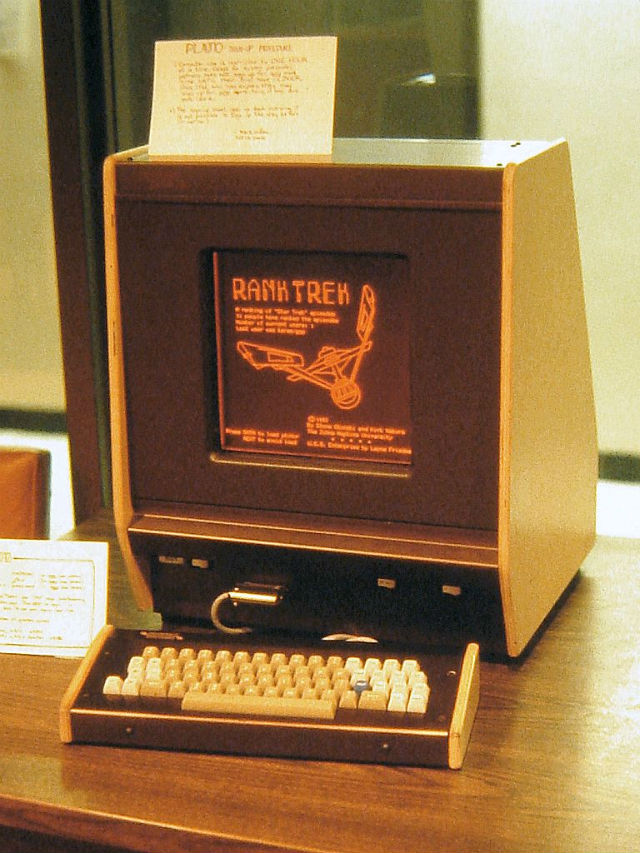If you’re reading this, you probably surf the web, write blogs or comment on them, post on sites like Facebook or Twitter, play multiplayer games, or even take online courses. Although these things might seem very new, they were all pioneered by a system called PLATO and have been around since at least the 1970s.
The PLATO (Programmed Logic for Automated Teaching Operations) project started in the 1960s at the University of Illinois, where faculty wanted an automated computerized tutoring system in order to keep up with the influx of students after World War II, when the GI Bill made college affordable to more people than before. The first iteration started in 1960, with a TV set being used for a terminal hooked up to a central mainframe.
Several other major improvements occurred, but the biggest one was the TUTOR programming language, which allowed people without a lot of computer experience to create some advanced multiuser programs. By the mid-1970s, what we would recognize as social media and online gaming was already a reality when most people didn’t have access to computers, and those that did were relegated to submitting punch cards.
Originally intended for such scholarly projects such as simulating chemistry labs, users quickly seized on its potential to create multiplayer games, such as a version of “Star Trek,” which had already proved popular on mainframes and minicomputers of the day, as well as a flight simulator. “Star Trek” evolved into “Empire.” Several other “Dungeons And Dragons”-inspired games popped up.
In addition to games, users communicated to each other using the terminals, which had spread to include other colleges and schools, to communicate over message boards and in real-time, a precursor to forums and instant messaging, as well as blogging, Facebook and Twitter.
Control Data Corportation, who made the mainframes PLATO ran on, commercialized the project and added even more material, including high school and college, as well as everything from home finance to Lamaze.
The system was also innovative on the hardware front as well. The PLATO terminals were the first to use plasma screens, giving them a characteristic orange glow. They were also early adopters of touchscreen technology, something many Android and iPhone addicts take for granted.
Of course, the passage of time made PLATO less attractive as more people got access to PCs and the Internet, but the system still serves as an early example of what we would later call social media. It’s also important to remember how old some of the things we think of as “new” really are.
If you want to try PLATO out, you can still do so on the Cyber1 website.
If you like this, then check out our look at Tracy Kidder’s classic Pulitzer-winning 1981 book “The Soul of a New Machine,” as well as our post on the pioneering Blit terminal form 1982, if you want more retro tech.
Photo credit: Mtnmn79/Wikipedia











